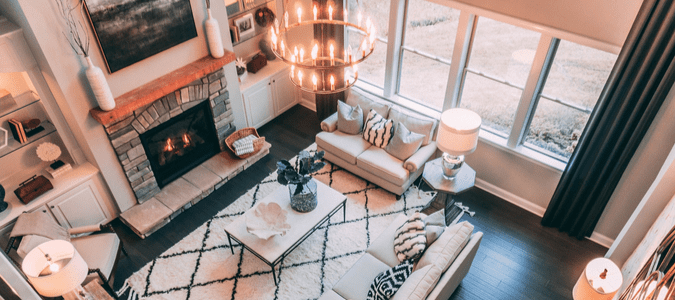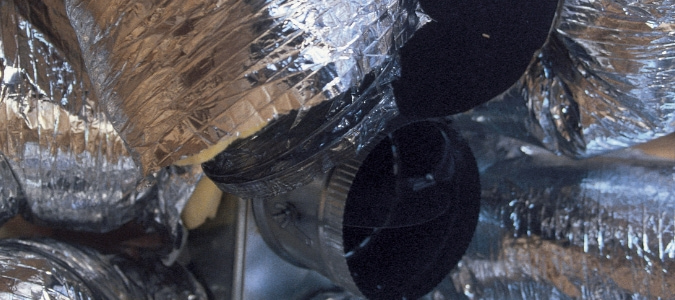Having insulation in several areas of your home is a great way to make it as comfortable as possible. While many of these places can be hard to reach, it is usually easy to access the attic. This means adding insulation in this space can often give you the biggest bang for your buck.
There are many benefits of having insulation added to your attic. For one, it can increase the energy efficiency of your home, which can help you save money on your heating bill. If your attic is insulated, this usually means that your energy bills will be lower than if your home was not protected in this way. Plus, this can also make your home more comfortable by helping you keep your space cool when you want it cool and warm when you want it warm.
Additionally, insulation can help make your home a more pleasant place to live by reducing the number of unwanted sounds you hear from outside. Insulation can also help manage the level of moisture in your home and prevent the growth of mildew and mold in your air vents or in other parts of your home, which can cause serious health problems for you and your family.
While you might already have some insulation in your attic, you will not get the greatest benefits that insulation can bring if you do not have the right amount. Of course, figuring out how much insulation you should have in your home can be tricky if you try to tackle this project on your own.
That is why it is best to contact an insulation professional to help with any insulation job in your home. Specialists have the skills and knowledge to determine how much insulation you need, and the experience and tools to install it properly.
If you decide to go the DIY route, there are some basic things to keep in mind when trying to figure out how much insulation you need. As a general rule, if you can see the horizontal floor beams in your attic (also called floor joists), then you need to add more insulation. Insulation should be at an even level across your attic floor. If you see any exposed floor joists where there is a lower level of insulation, then it is a good idea to add extra insulation to these areas.
If you do not spot any exposed floor joists and the insulation looks to be even across your attic, then there is usually not any reason to add more. At a certain point, installing extra insulation will not make your home any more comfortable or energy-efficient and could just be an unnecessary expense.
It is also important to consider the type of insulation you already have in your attic, the type you are considering adding and any climate-specific recommendations on insulation in the area where you live. Different types of insulation and recommended levels of insulation are measured using R-values.
R-values are basically a rating of the insulation’s ability to resist the flow of heat in and out of a space. In some colder areas of the country, like Montana and the Dakotas, homeowners need insulation with a higher R-value in their attic to protect the house from extreme temperatures. For many areas of the United States, the recommended R-value for attic insulation is around R-38, but for colder parts of the country, the recommendation might be as high as R-50 or R-60.
Additionally, with some types of insulation, you will need to install more of it to achieve the desired R-value. For example, the R-values for roll and batt insulation generally maxes out at a certain level, so you might need to use several layers of insulation to reach the necessary R-value. On the other hand, you might not need as deep a layer of loose or blown-in insulation to get the same R-value.
Types of Attic Insulation
There are several different types of insulation on the market. Some of the kinds of insulation that are typically the best choices for attics include:
- Roll insulation. This kind of insulation is usually made of fiberglass, wool or cellulose materials like recycled cardboard. It comes in wide blankets or sheets that may or may not have a backing of aluminum or paper. Rolls are a good choice for attic insulation because they are easy to lay over floor joists in the attic, and you can cut the sheets to fit your space. It is important to remember not to flatten or squish this insulation when you are installing it because forcing it into an area can make it less effective. In addition, roll insulation is not usually available in higher R-values. To get the R-value you are looking for, you may need to use several layers of roll insulation or a combination of different kinds of insulation.
- Batt insulation. Like roll insulation, batting is also made of cellulose, fiberglass or wool and may have a backing on it. It also comes in strips instead of wide sheets. Batt insulation can be good to use when you need to fit around parts of your attic like support beams. Like roll insulation, batt insulation does not come in higher R-values, and you will want to avoid forcing batting into a space.
- Loose fill or blown-in insulation. This insulation is made of fiberglass or cellulose, and it usually comes in higher R-values than roll or batt insulation. Because the insulation is loose, it is good at filling in the spaces between the floor joists in your attic and other similar areas. Adding this type of insulation typically requires using a specialized machine to spread or blow it into your attic.
Other Types of Insulation
Some other types of insulation that you might use in parts of your attic include foam and specialty insulation like radiant barriers and water heater jackets. These kinds of insulation are best for reflecting heat away from your home or getting a snug fit around objects like plumbing, wires and ducts. They are usually used in addition to the other kinds of insulation that protect the open spaces of your attic.
You can use a mix of different types of insulation to get the R-value that you need. For example, if you already have batt insulation in your attic, you can add loose insulation on top of it to achieve a higher R-value. But, it is important to keep a few things in mind. For one, if the batt insulation has a backing on it (also called a “facing”), then you will need to remove this before adding more insulation.
Additionally, it is essential to be careful when handling insulation. Touching or inhaling particles from insulation can seriously harm you or your family if you are not sure what you are doing. That is why it is best to hire a specialist as opposed to trying to work on this project by yourself. These professionals can take care of everything for you, so you do not have to deal with the mess and dangers of trying to install insulation on your own.
How to Install Insulation in an Attic
Nowadays, a lot of people are into doing DIY projects around the house. However, when it comes to installing insulation in your attic, this can be a dangerous task if you are not an expert. Because of this, it is typically safer and much easier to hire a professional to handle this job.
Nonetheless, if you would like to install attic insulation on your own, it is important to follow some basic preparation steps before you begin, including:
- Find the R-value for the area where you live to help figure out how much insulation you need in your attic.
- Determine what type of insulation you want to use. This depends on how big of an area you need to cover and the shape of your attic.
- Gather the materials you will need for the project, like insulation, a tape measure, scissors, a straightedge and a staple gun or blowing machine (depending on the kind of insulation you are using).
- Put on protective equipment like a mask, gloves, goggles, boots, long sleeves and pants to protect yourself during the installation.
- Prevent leaking air ducts by carefully sealing these areas.
Once you have prepared your space, you can install your insulation. With roll or batt insulation, first cut the insulation to fit your space. Then, secure it in your attic using something like a staple gun. Installing loose insulation involves using a special machine to blow the insulation into your space.
ABC Can Help You Save on Your Electric Bill
We all want to save money on our heating and cooling costs and make our homes more energy-efficient. Installing insulation in your attic can be both dangerous and time-consuming if you are not an expert. If you want to make your home more energy-efficient, contact ABC Home & Commercial Services. Our experts can give you advice on the benefits of insulation and can help you decide on the right type of insulation for your home.



